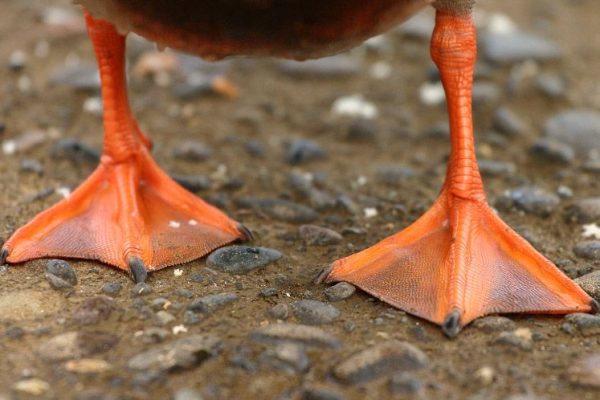Do avian species possess ears? We do not notice ears when we gaze at birds. It is easy to question if they are hearing at all. But birds respond to sound and sing to one other. In actuality, birds do have ears, and they have excellent hearing. Simply put, they lack our sense of hearing.
Birds have ears that resemble lizards rather than ears protruding from the sides of their heads. Protected by soft, barbless feathers, they have a circular hole on either side of their head that is almost as large as their eyes. The majority of birds conceal their ears with feathers.
But if we look at emus or other bare-headed birds, we can see those tiny, round apertures. They are located on the rear of the face, behind the eyes.
This post explains all there is to know about bird ears and their remarkable sense of hearing!
How Are Birds Able to Hear?
Birds’ middle and inner ears, like those of humans, are designed to both receive and process sound waves. Although humans tend to have a greater sound frequency range than birds, they nonetheless hear many of the same frequencies as us.
This might seem surprising, especially when so many birders are unable to hear the high-pitched, 8,000 to 10,000 Hz songs of kinglets and Blackpoll Warblers.
However, age-related, natural hearing loss is often the reason why one cannot hear those species or other noises over 8,000 Hz. Younger birdwatchers are more at ease hearing Brown Creepers and Blackpoll Warblers.
People typically have a hearing range of 20–20,000 Hz, but most birds sing in the 1,000–8,000 Hz range. Nevertheless, some birds sing above and some below these ranges. The Dwarf Curassow has a loud, very low-pitched song that only reaches 23 Hz.
The Rufous-faced Warbler of eastern China, on the other hand, has been documented singing very high harmonics of 54,000 Hz!
Birds have extraordinary hearing as well. Barn Owls hear and capture rats in the dark, Great Gray Owls can hear mice making noises under the snow, and they can hear sounds at a considerable distance. These species’ and other birds’ heads and face structures aid in identifying the source of a sound.
The Significance of Head Movement
Frequently, while observing birds, we see a hawk swaying its head from side to side or a heron cocking its head to one side. If we are fortunate enough to see an owl in action, we may be able to observe it move its head back and forth as well as up and down. Birds use all of these head movements to help them locate sounds and are related to hearing.
These and other birds’ head motions aid in their ability to detect prey. Similar to this, head motions are also employed to identify predators, detect fledglings pleading for food, and determine the location of competitors’ songs.
Sound waves may be directed toward a bird’s ears by the way its feathers are placed on its head and face. Moreover, the frequencies that each ear perceives varies somewhat from the other.
These changes allow a bird to move its head back and forth and provide a much more precise image of the source of the sound.
Owls that hunt in low light levels need to be able to make these kinds of motions. Owls turn their heads to find the source of a sound, much as other birds do.
But compared to other birds, they are much more adept at focusing on the sound.This skill is partially the result of having two “different” ears.
Most nocturnal owl species have asymmetrical ears wherein one ear is situated somewhat lower on the side of the head than the other. As a consequence, sounds will register in one ear somewhat ahead of the other.
The little delay in time, when combined with face and feather structures like a shallow dish, aids owls in hearing and locating small rodent scuttling and scratching in the dark and beneath snow.
Anthropoid Ear Structure
Bird ears resemble tiny, round apertures on each side of the head from the outside. They don’t have the external ear structures like humans and other mammals have; instead, they are on the side of the head, behind the eyes. Like humans, they have middle and inner ear structures, and their ears are shielded from harm by specially designed, soft feathers.
Study up on the anatomy of birds.
Their inner and middle ear anatomy resemble those of reptiles more than those of humans. Birds and humans both have cochleas and eardrums, however humans also have ossicles, or small ear bones, and their cochleas are shaped differently.
Although there are some structural distinctions, humans and birds have comparable organs for the detection and interpretation of sound.
Commonly Asked Questions
Without ears, how can birds hear?
Ears are present in birds. Simply said, bird ears are difficult to see since they are often covered in feathers and have no outward structure.
What name are the ears of birds?
There is no unique term for bird ears. All we call them are ears.
Do birds have ears?
Birds have ears just behind their eyes on either side of their heads. These are tiny, rounded holes that are often covered with feathers.
Do all birds have ears?
Despite being covered in feathers, all bird species have ears.
Do birds detest loud noises?
Loud noises annoy most birds. Some urban birds, however, have adjusted to the loudness of the city and now perform stronger melodies to make up for it.
Do any birds have hearing loss?
It doesn’t seem that birds can lose their hearing, and there are no deaf birds in the world.




![A Guide To Identifying Small Black Birds [Smaller Than Crows]](https://birdsology.com/wp-content/uploads/2024/01/14755.webp-600x400.webp)
